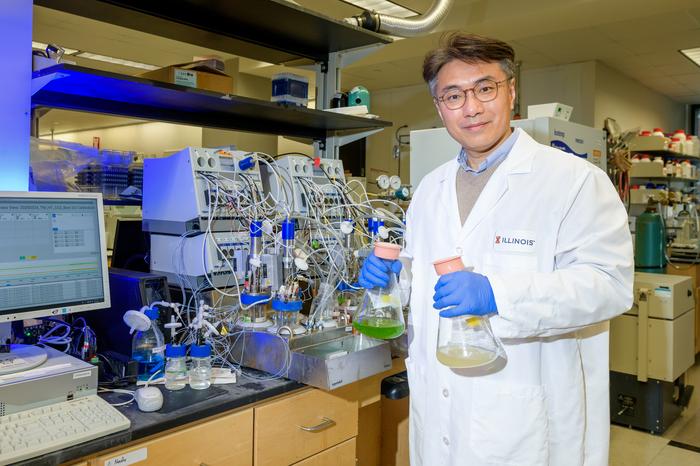In a significant advancement for sustainable biotechnology, researchers have developed a new method to convert carbon dioxide (CO₂) into useful biological products without relying on additional carbon sources. The breakthrough, published in the journal Metabolic Engineering, combines the photosynthetic efficiency of microalgae with the production capabilities of genetically engineered Escherichia coli (E. coli).
The research team, led by Professor Yong-Su Jin of the University of Illinois Urbana-Champaign, developed a novel system that pairs a mutant strain of the green microalga Chlamydomonas reinhardtii with E. coli. Unlike previous approaches using cyanobacteria to convert CO₂ into sugars (which serve as a universal carbon source for microbes), this system enables the algae to absorb carbon dioxide and excrete glycolate, an organic acid that E. coli can directly metabolize, but most other microorganisms cannot.
This targeted method improves efficiency and reduces costs by eliminating the need for additional carbon-rich feedstocks. It also minimizes microbial competition, as glycolate is not broadly consumed like sugars are.
The innovation marks a new chapter in carbon capture and bio-conversion technologies, offering promising implications for green manufacturing, biofuel production, and climate change mitigation through scalable CO₂ utilization.
“Sometimes sugars are better for the production of certain products, and sometimes the organic acid is better,” Jin said. “But if we use glycolate instead of sugar, we have less chance of contamination with outside organisms.”
Through numerous experiments, a modular co-culture bioreactor was developed. Initially, C. reinhardtii is grown in a dedicated chamber under conditions specifically tailored for the microalgae, maximizing its population while restricting glycolate output. Then, in a separate chamber, the microalgae and E. coli are co-cultured, allowing the microalgae to produce the necessary glycolate to sustain the bacteria and supply the carbon required for the production of useful chemicals.
“It’s kind of mutualistic system,” Jin said. “E. coli removes the glycolate, benefitting the Chlamydomonas.”
The researchers used this setup to generate two valuable compounds: lycopene, a powerful carotenoid antioxidant with numerous potential health benefits, and green fluorescent protein, which is widely used in biochemical research.
The successful production of these compounds is a proof-of-concept that the system works, Jin said.
“We can also imagine that we can use this approach to make other valuable proteins such as insulin,” he said.




